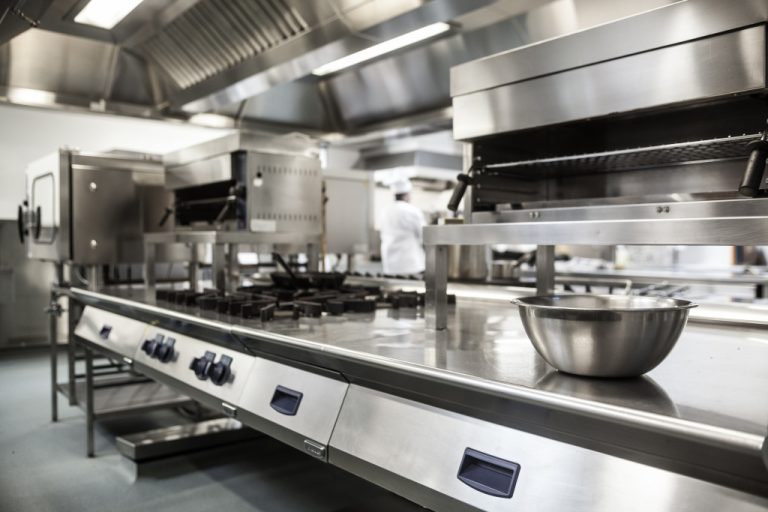- Consider investing in energy-efficient appliances and equipment to decrease the energy you use and cut down on utility costs.
- Improve efficiency and reduce costs in the kitchen by streamlining operations.
- Track the amount and quality of food waste, identify the reasons for waste, and reduce expenses.
- To help the chef and save resources, we request that guests choose a limited number of menu options.
Running a commercial kitchen can be expensive and time-consuming, but some strategies can help streamline operations and increase profitability. Cutting costs in the kitchen without sacrificing quality is essential for any business to succeed.
By implementing these strategies, businesses can maximize profits while ensuring customer satisfaction. With careful planning and implementation of cost-cutting measures, businesses can improve their bottom line without compromising on quality or service.
Invest in Energy-Efficient Appliances and Equipment
Investing in energy-efficient appliances and equipment is essential for businesses looking to cut costs and increase profitability. By using innovative technology, energy-efficient systems can substantially reduce energy consumption, resulting in savings on utility bills. One such investment option that businesses can consider is a commercial ultrafiltration system.
This can remove impurities and contaminants from water, resulting in improved quality and a longer lifespan for appliances and equipment. Not only does this benefit the environment by conserving resources, but it also protects your bottom line in the long run. It’s crucial to work with an expert to understand the full range of options and make the right choice for your business.
Streamline Kitchen Operations
Streamlining kitchen operations is essential to optimizing efficiency and cutting costs in the commercial kitchen. Here are some tips to help streamline kitchen workflow:
Monitor Food Waste
Proper food waste monitoring is crucial to managing any establishment that requires food products. This is because food waste directly impacts the overall profitability of such establishments. By monitoring food waste, managers can track the quantity and quality of lost food, analyze the reasons behind waste, and make informed decisions to minimize food waste.
In addition to the financial benefits of reducing food waste, properly monitoring it can also significantly contribute to environmental sustainability by reducing the amount of wasted resources. Therefore, timely and accurate food waste monitoring is essential for any establishment that values profitability and sustainable practices.
Limit Menu Options

Limiting menu options is a strategy used in the food service industry to help reduce costs and increase profitability. Commercial kitchens can streamline operations and reduce food waste by limiting the number of dishes offered.
This process allows chefs and kitchen staff to focus on preparing a smaller selection of dishes to perfection rather than spreading their efforts thin across a vast menu. Limiting the number of menu options may also help restaurant owners negotiate with suppliers, as they will buy larger quantities of the same ingredients. Using this strategy, commercial kitchens can save time, reduce waste, and improve the overall quality of their dishes.
Utilize Technology to Streamline Ordering Processes
Streamlining ordering processes through technology is crucial for businesses seeking to cut costs and increase profitability. Proper utilization of technological tools can eliminate the need for manual entry, inventory tracking, and purchasing, resulting in significant labor and time savings.
Adopting automated systems enables businesses to focus their resources on other critical areas of the operation and improves the accuracy of order processing. Litigation costs can be high, and automated systems significantly minimize the risk of errors, chargebacks, and legal issues. In sum, leveraging technology to streamline ordering processes contributes significantly to overall efficiency and bottom-line profits.
Re-evaluate Supplier Relationships
Re-evaluating supplier relationships is a critical process that can help businesses cut costs and boost profitability. This involves comprehensively analyzing existing suppliers and their respective contracts to determine if they still provide competitive pricing, quality goods, and timely delivery.
Through a thorough re-evaluation, companies can identify areas for improvement and renegotiate contracts or consider new suppliers that offer better value. This process is crucial for businesses looking to stay competitive and ensure they are not overpaying for goods and services. Properly conducted supplier relationship assessment can lead to significant cost savings and higher profits.
Negotiate Better Prices for Bulk Orders

Negotiating better prices for bulk orders is essential for any business looking to cut costs and increase profitability. It involves communicating with suppliers and determining how much product is needed while considering the costs. An effective negotiation strategy can involve the following:
- Offering to buy in bulk.
- Finding out about the supplier’s production costs and margins.
- Using that information to negotiate better prices and payment terms.
In doing so, businesses can expect to increase their profit margins, reduce purchasing expenses, and create stronger relationships with suppliers, which can lead to even greater savings in the future. Especially for bulk orders, proper negotiation is key to success.
These are just some strategies businesses can use to cut costs and increase profitability in their commercial kitchen. Businesses can enhance performance and maintain customer satisfaction by carefully planning and implementing cost-cutting measures.













